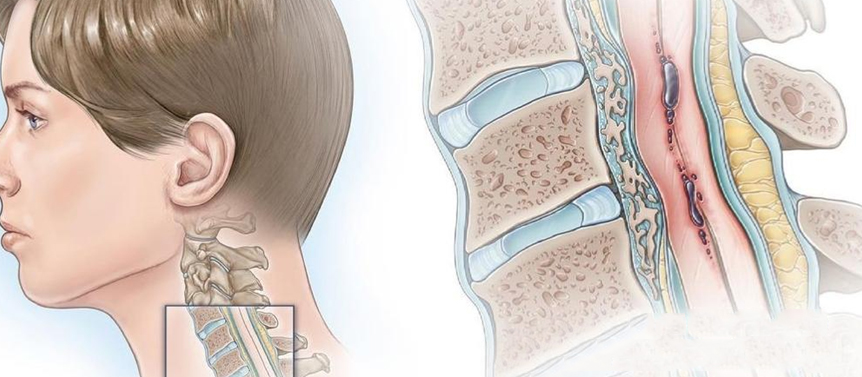Cervical Myelopathy

Cervical myelopathy refers to a condition characterized by compression or damage to the spinal cord in the cervical (neck) region of the spine. It is typically caused by degenerative changes, such as spinal stenosis or disc herniation, in the cervical spine.
The cervical spinal cord is a vital structure that carries nerve signals between the brain and the rest of the body. When the spinal cord is compressed or injured, it can lead to a range of symptoms that affect motor function, sensation, and coordination.
The common causes of cervical myelopathy include:
- Cervical spinal stenosis: This condition involves the narrowing of the spinal canal in the cervical spine, which can compress the spinal cord.
- Disc herniation: When a disc in the cervical spine ruptures or protrudes, it can impinge on the spinal cord and cause myelopathy symptoms.
- Cervical spondylosis: Degenerative changes in the cervical spine, including the discs and facet joints, can lead to the formation of bone spurs and other abnormalities that contribute to spinal cord compression.
- Traumatic injury: Severe trauma, such as a car accident or a fall, can cause direct injury to the cervical spinal cord, leading to myelopathy.
The symptoms of cervical myelopathy can vary depending on the location and severity of spinal cord compression. Common signs and symptoms include:
- Neck pain: Pain in the neck that may radiate into the shoulders or arms.
- Weakness: Muscle weakness, particularly in the hands and arms, which can affect grip strength and fine motor skills.
- Numbness and tingling: Sensations of numbness, tingling, or "pins and needles" in the hands, arms, or legs.
- Coordination and balance problems: Difficulties with balance, stumbling, and unsteady gait.
- Loss of fine motor skills: Difficulty with tasks that require fine motor control, such as buttoning clothes or writing.
- Changes in reflexes: Altered or absent reflexes, such as reduced bicep reflex or abnormal Babinski reflex.
If cervical myelopathy is suspected, a thorough evaluation is necessary to confirm the diagnosis. This may involve a comprehensive physical examination, neurological assessments, imaging studies (such as MRI or CT scans), and possibly nerve conduction studies.

